The Petrov’s Defense which is also called the Russian Game, is a solid defense for Black against the King’s pawn opening (1. e4).
In the Petrov, Black responds to White’s attack on their e5 pawn with a counterattack of their own on the e4 pawn.
This starting move is unique to the Petrov’s Defense and while the opening is said to be a drawish one that lacks much bite, over the years, there have been players who showed the world that the Petrov can indeed be a potent weapon for Black.
The moves that characterize the Petrov are 1. e4 e5 2. Nf3 Nf6.
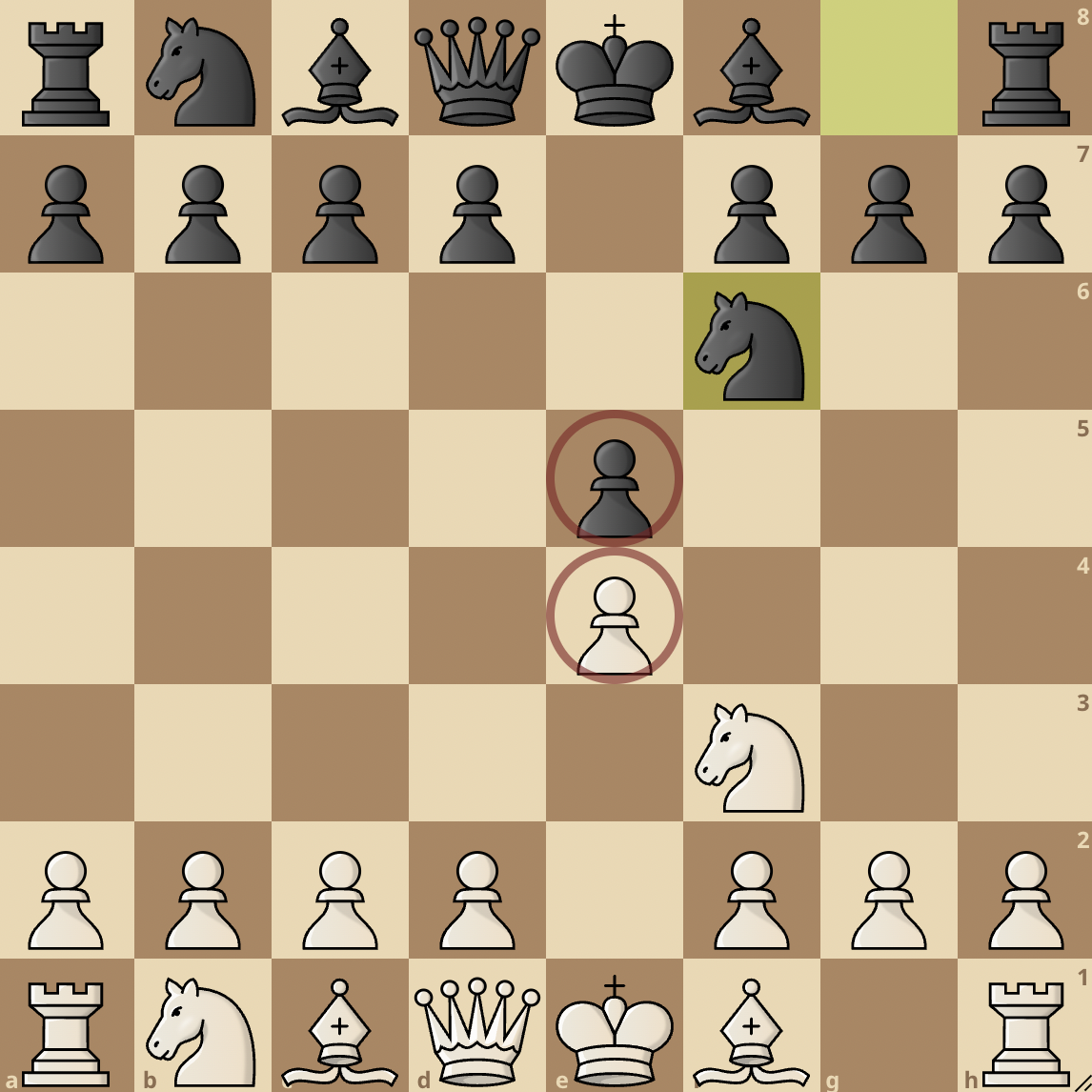
In other openings that stem from the King’s pawn opening, like the Ruy Lopez and Italian Game, after Nf3, Black usually defends their e5 pawn with …Nc6. However, in the Petrov, Black counterattacks by playing 2…Nf6 and attacking White’s e4 pawn.
Three main variations can arise here:
- The Classical Variation
- The Modern Attack
- The Three Knights Variation
The Classical Variation
1. e4 e5 2. Nf3 Nf6 3. Nxe5
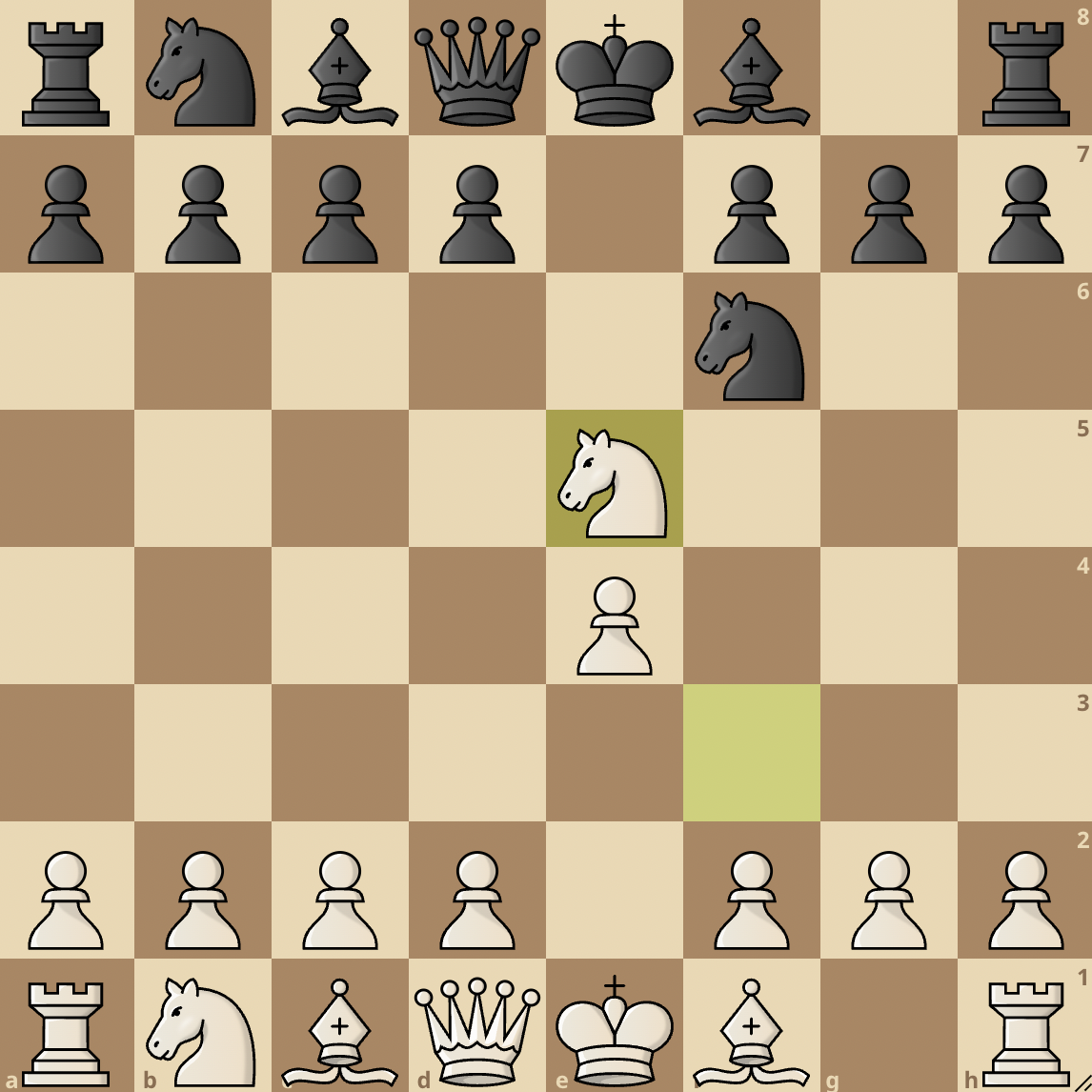
The Classical variation is the most popular variation in the Petrov, with over 19,000 games played at master level.
It starts with the move 3. Nxe5. White captures the e5 pawn and is now a pawn up. The best way for Black to handle this position is to play 3…d6 and chase the knight away.
Black should not get too hasty and capture the e4 pawn immediately. This is because after 3…Nxe4, Black has an inferior position.
But that’s not all, White can set a deadly trap with 4. Qe2. By playing Qe2, White attacks the Black knight on e4 and this can prompt Black to make a mistake. 4…Qe7 is the best move for Black and after White wins the knight with 5. Qxe4, Black plays 5…d6 and captures the knight on the next move.
However, If Black falls for the trap after 4. Qe2 and they play 4…Nf6, then they immediately lose the game. White will play 5. Nc6+, opening up a discovered check from the White queen to the Black king.
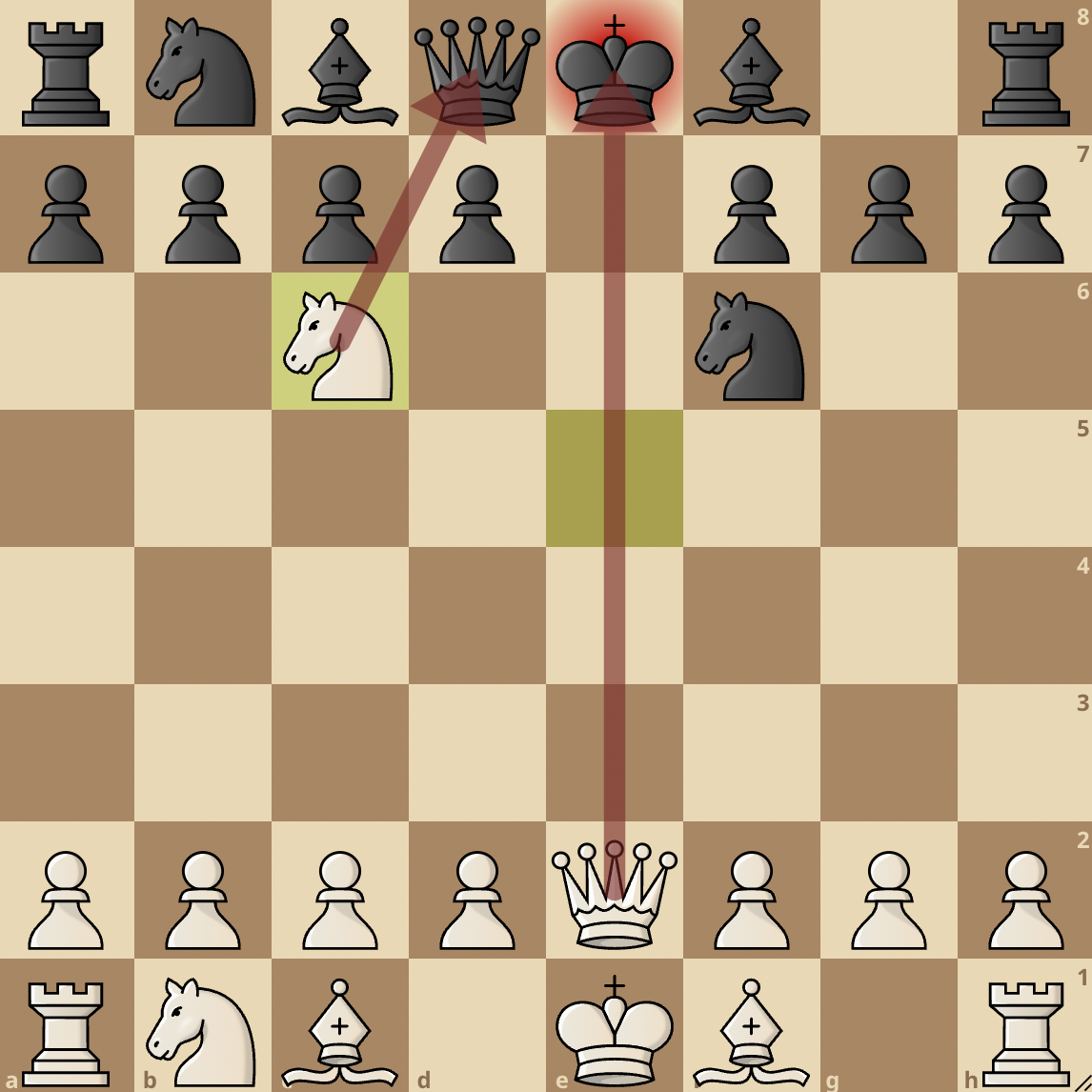
The White knight on c6 also attacks Black’s queen. Black has to respond to the check and no matter what they play, they will lose their queen on the next move. Now you see why chasing the knight away with 3…d6 is the way to go.
After 3…d6, White has to retreat with their knight and they play 4. Nf3. Black now wins back the e4 pawn with 4…Nxe4.
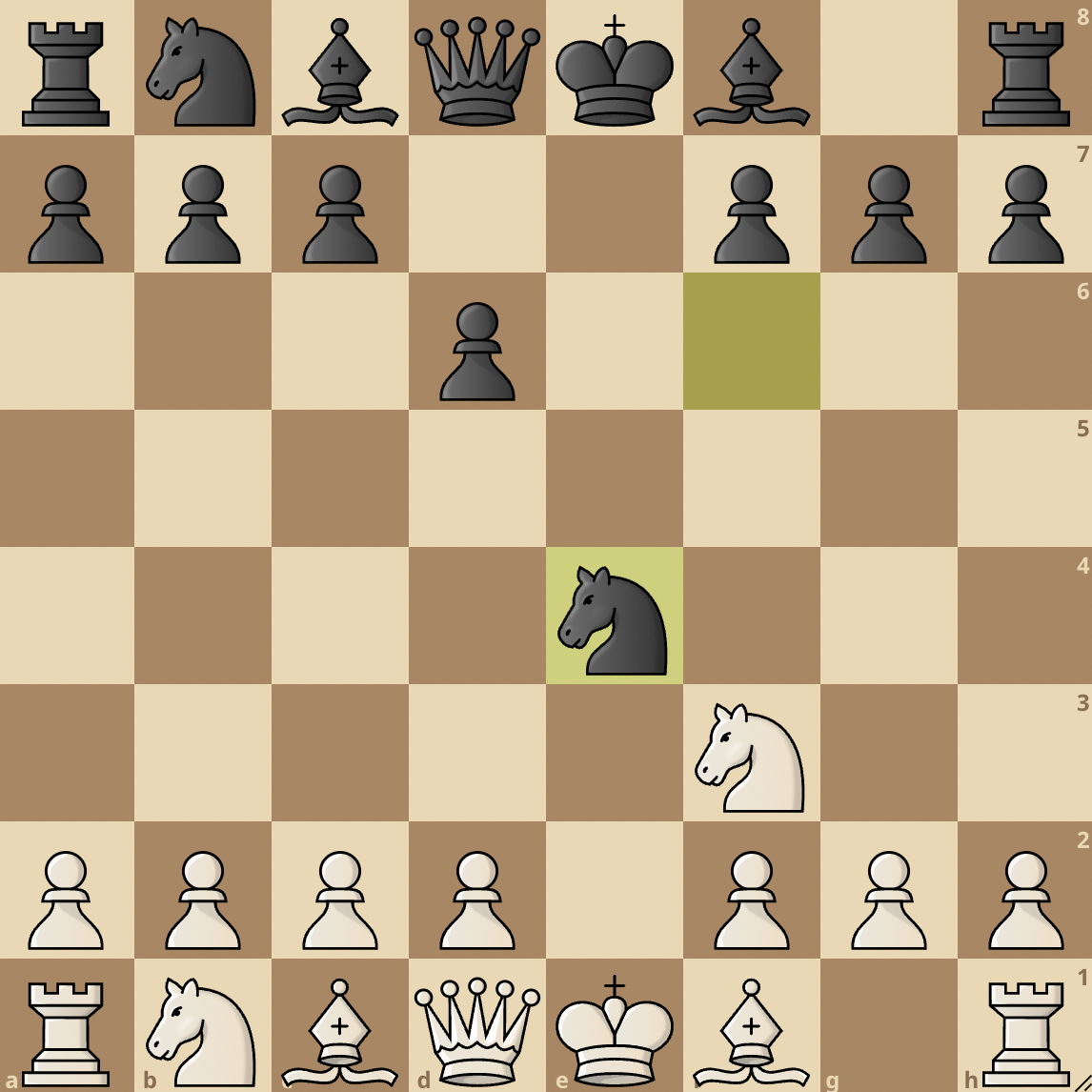
From here, White can go for 5. d4, which is known as the Classical Attack. They can also play 5. Nc3, the Nimzowitsch Attack.
Classical Attack
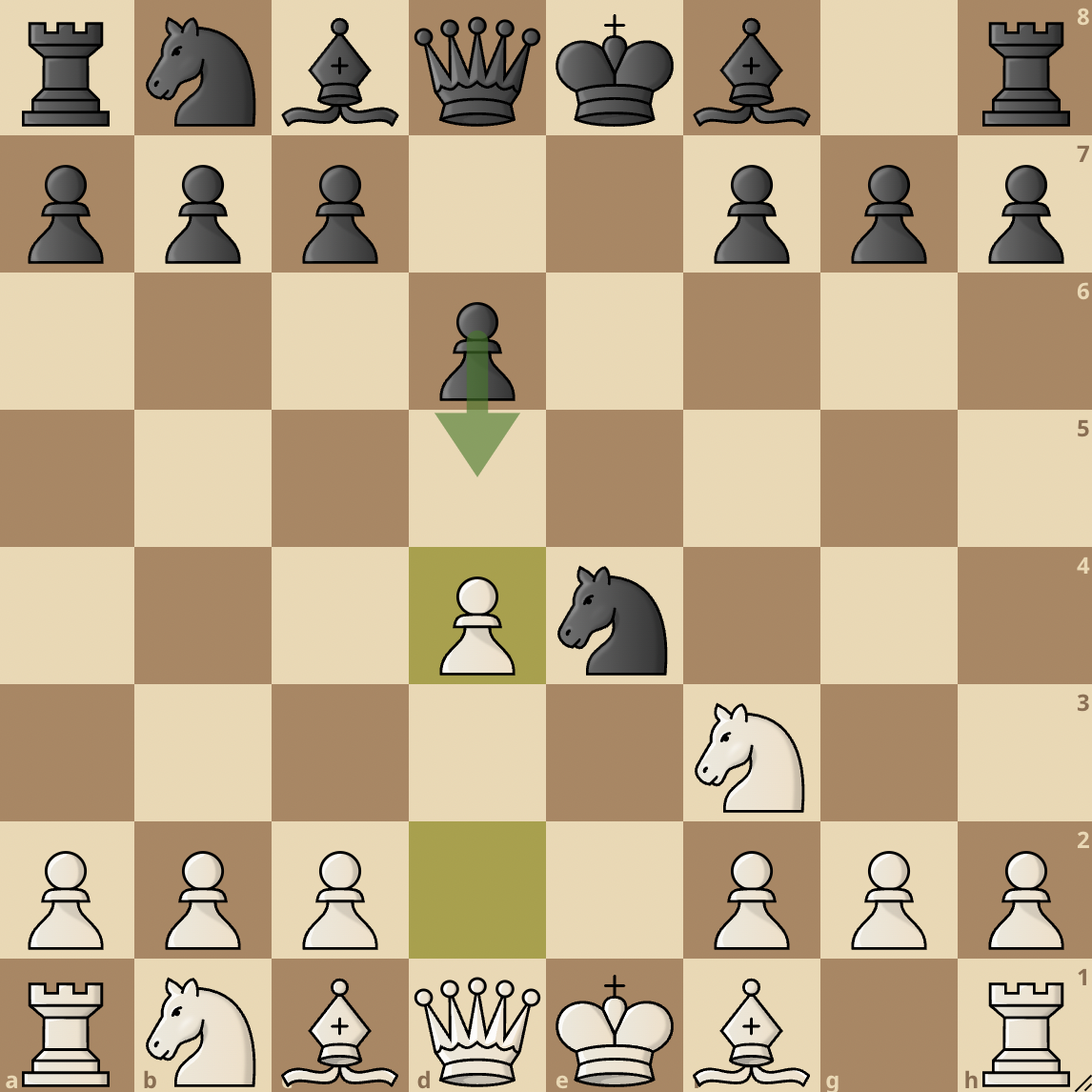
The Classical Attack starts with 5. d4, developing their Queen’s pawn and opening up lines for their dark-squared bishop.
Black then continues with 5…d5, adding support to their knight on e4. White then continues with 6. Bd3, developing their bishop, and Black also develops their knight with 6…Nc6.
White then castles with 7. 0-0 and Black develops their dark-squared bishop with 7…Be7. White attacks the d5 pawn with 8. c4 trying to undermine the solid Black knight on e4.
Black retaliates by threatening the light-squared bishop on d3 with 8…Nb4. White moves the bishop back with 9. Be2 and Black castles with 9…0-0.
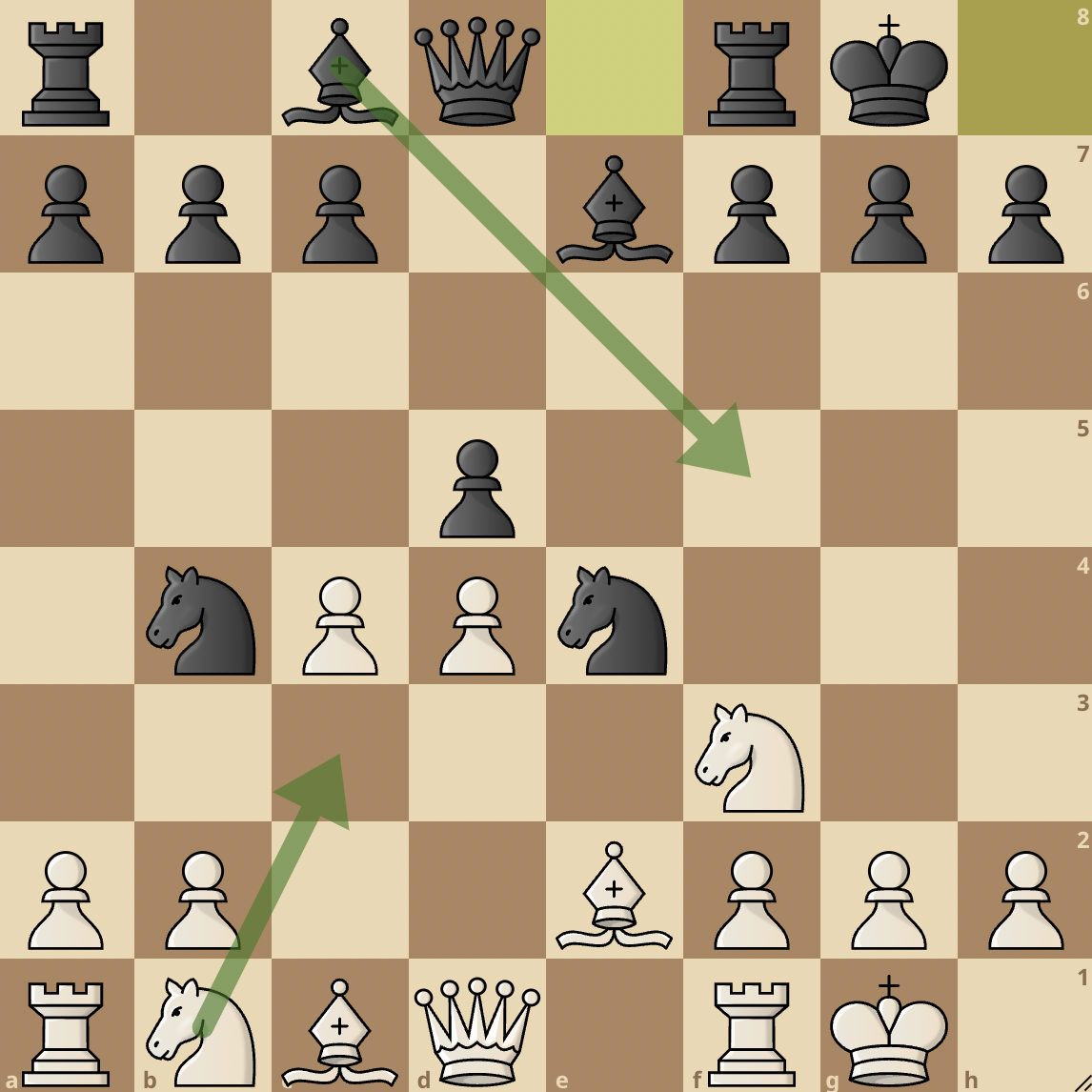
Both sides have solid positions and the position is more or less equal from here.
Nimzowitsch Attack
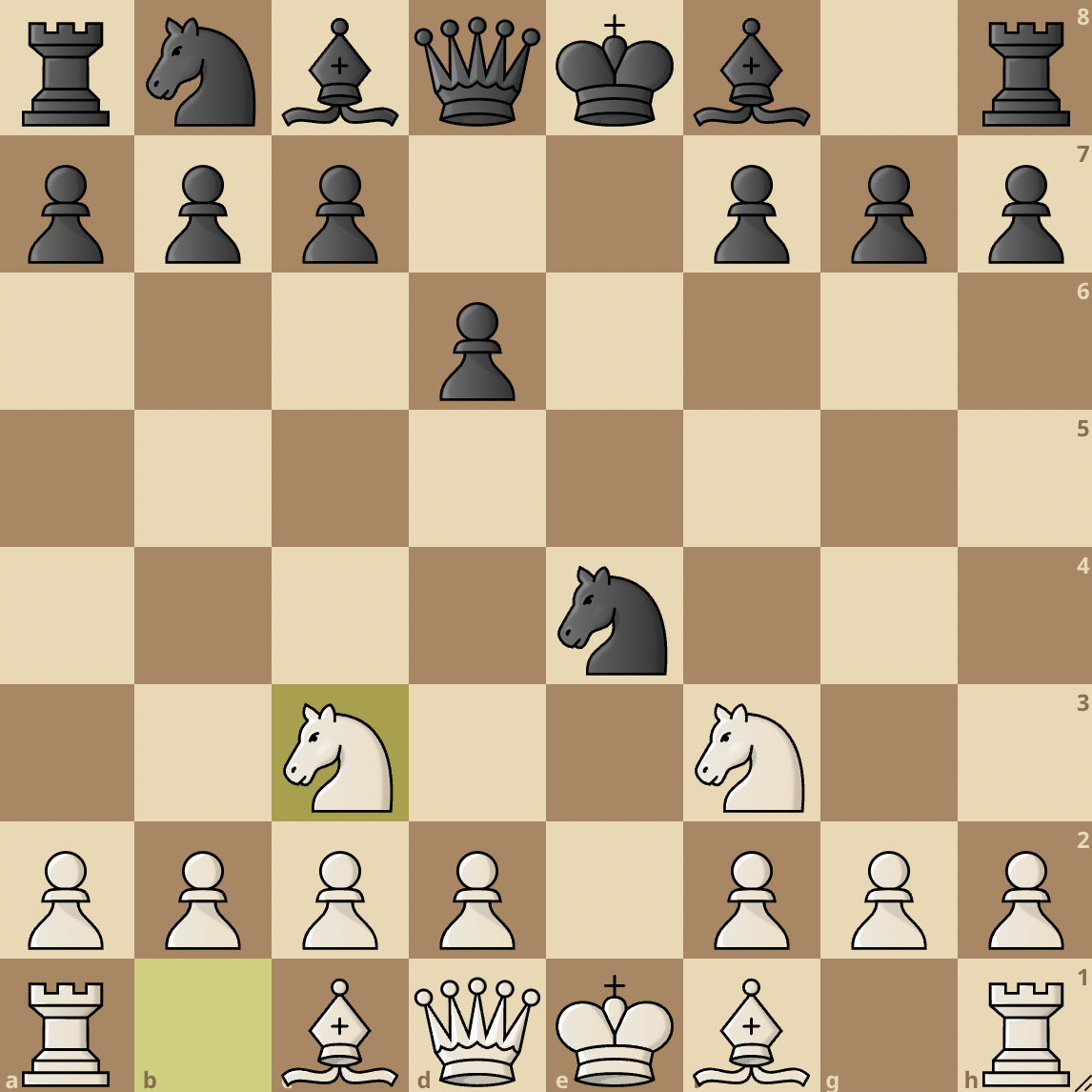
The Nimzowitsch Attack starts with 5. Nc3. White challenges the e4 knight by developing their knight to c3.
Black usually trades knights here with 5…Nxc3. White then recaptures with 6. dxc3 and doubles their pawns on the c-file. White willingly obliges to the doubling of their pawns since they plan to play Be3, Qd2, and castle queenside.
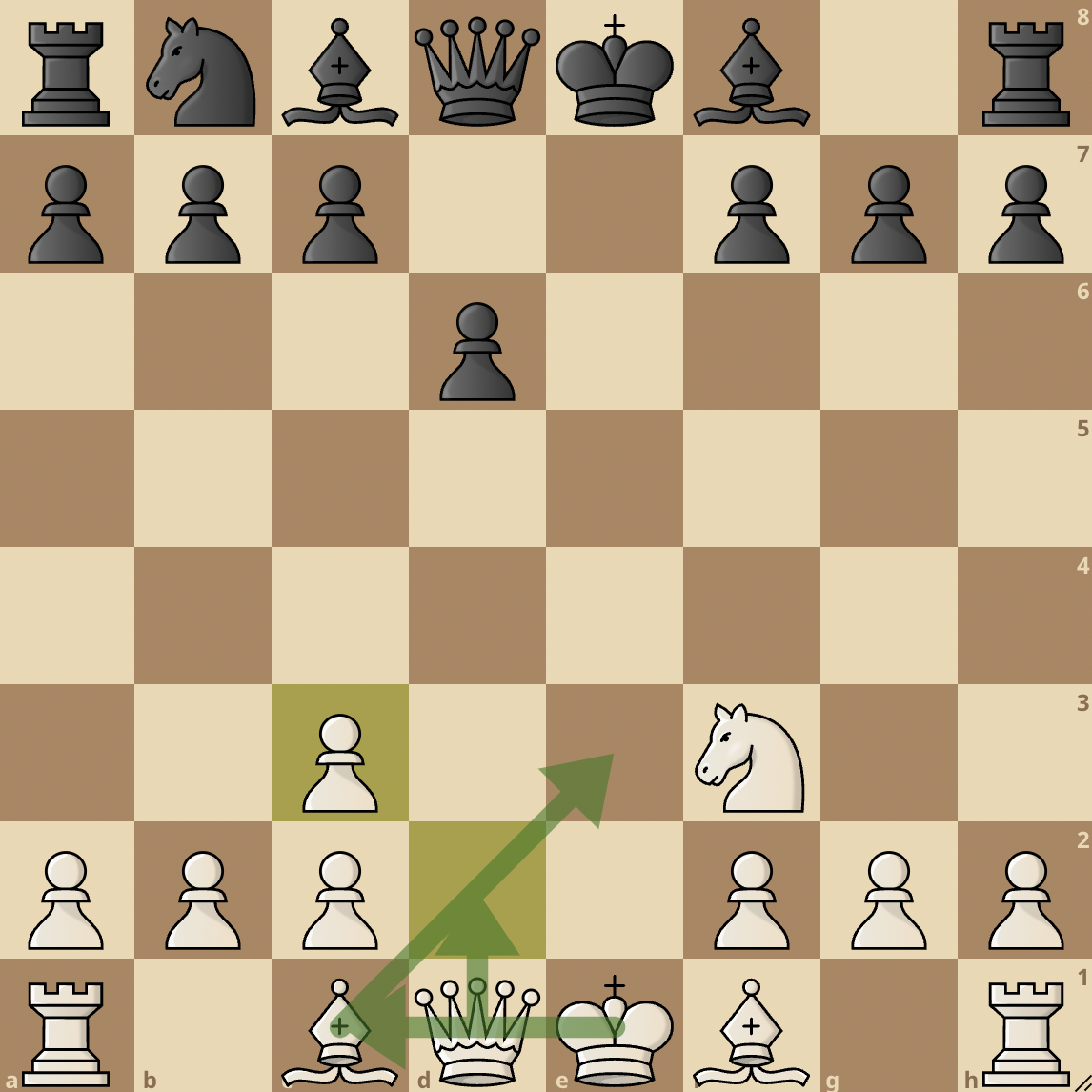
This line is a sharp variation in the Petrov as it features opposite side castling where White will try to go for the scalp of the Black king and Black will look to weather the storm on the kingside and then counterattack on the queenside and look to checkmate the White king.
Modern Attack
1. e4 e5 2. Nf3 Nf6 3. d4
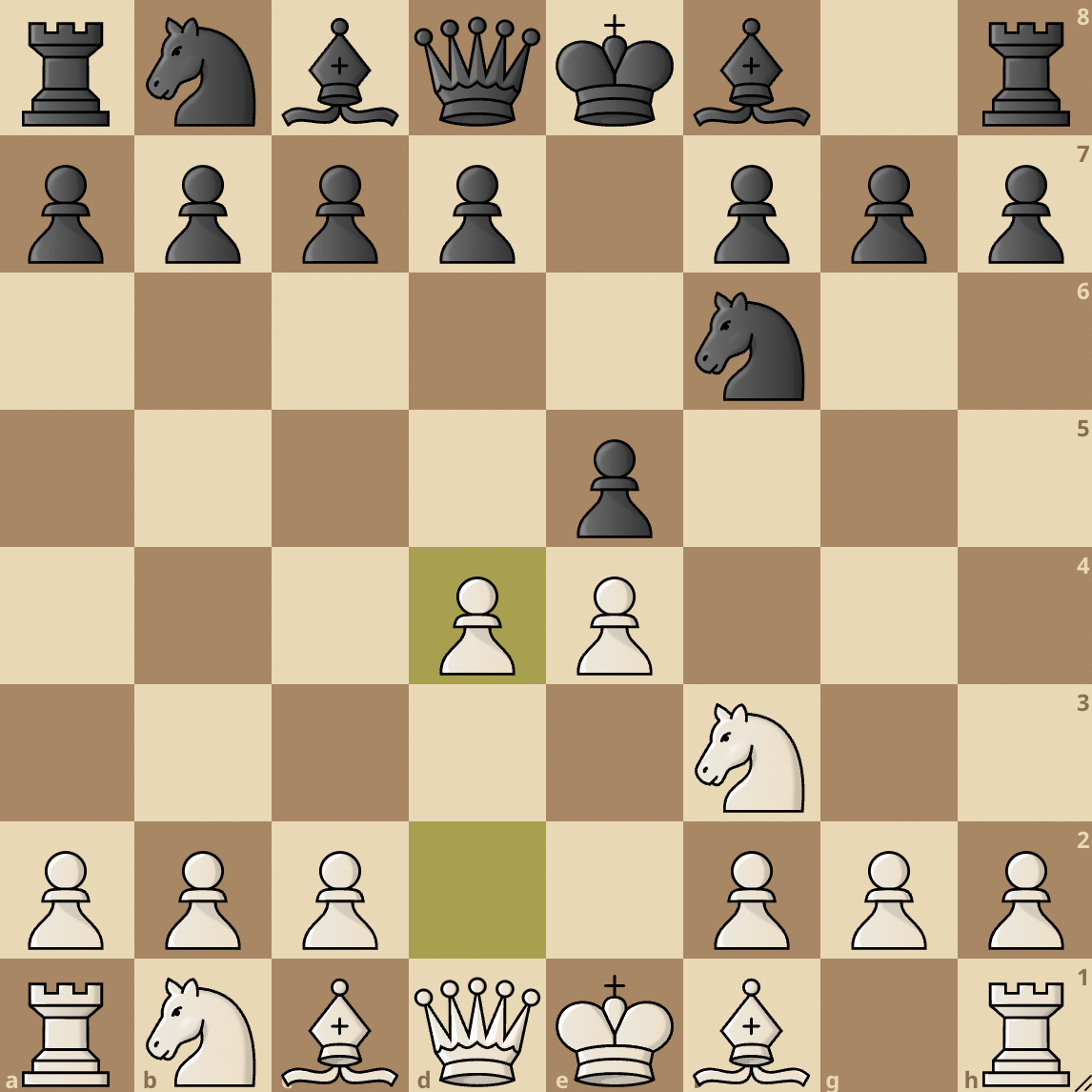
The Modern Attack that starts with 3. d4 is another variation White can go for in the Petrov.
After 3. d4, Black captures the e4 pawn with 3…Nxe4. White can choose to capture the e5 pawn with the knight or the pawn, however the best move is to play 4. Bd3 and attack the knight.
Black will defend the knight with 4…d5 and only now does White capture the pawn with 5. Nxe5.

Black then offers an exchange of knights with 5…Nd7. White obliges and an exchange happens with 6. Nxd7 Bxd7. White then castles with 7. 0-0 and Black plays 7…Bd6, preparing to castle.
The game usually continues with White playing 8. Qh5 to threaten the d5 pawn, however, Black can defend with 8…Nf6.
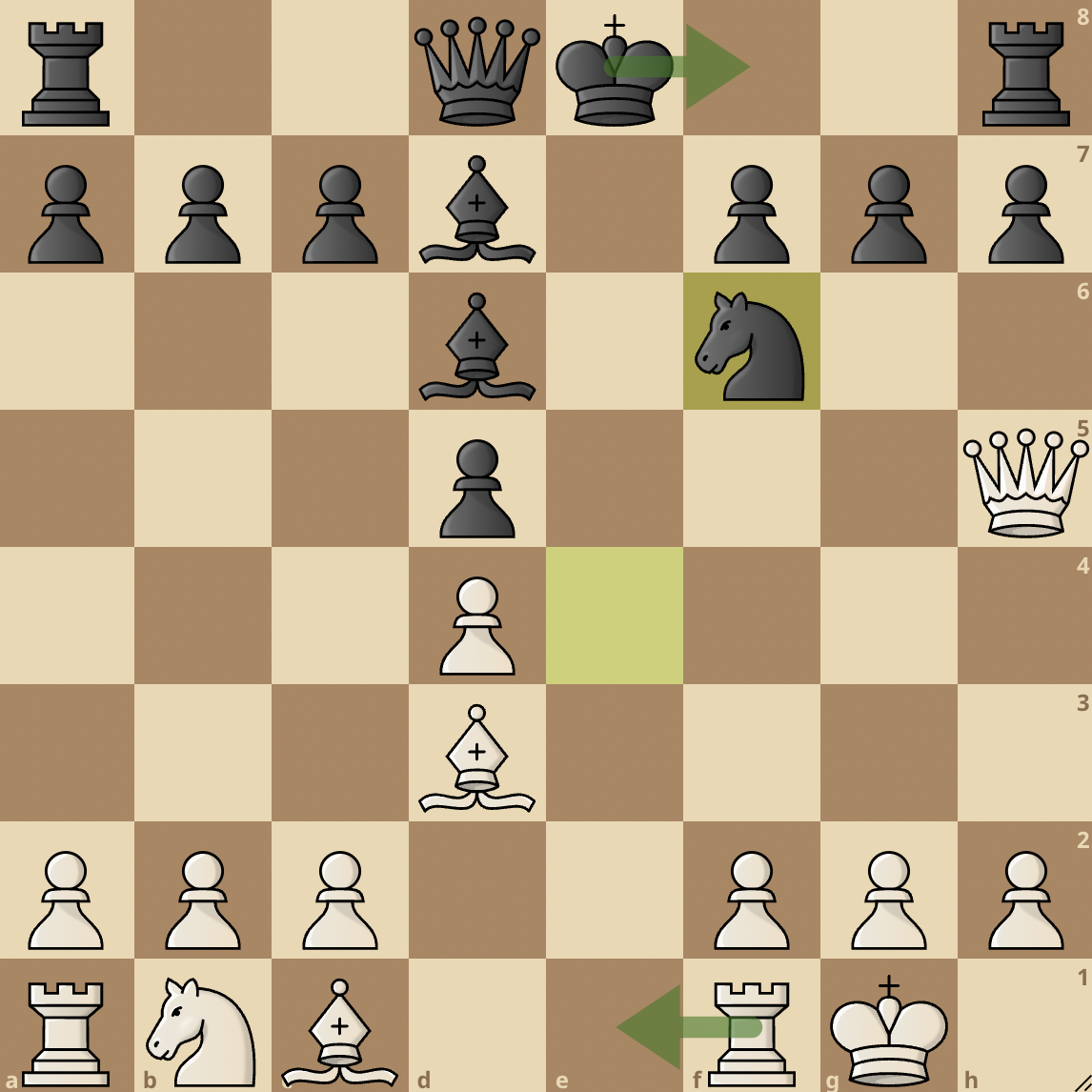
The above position is razor-sharp and White has to be careful seeing that Black has most of their pieces already developed and pointing towards White’s kingside.
The Three Knights Variation
1. e4 e5 2. Nf3 Nf6 3. Nc3

The Three Knights variation arises after 3. Nc3. The variation gets its name from this position on the board (there are three knights on the board)
However, this variation tends to deviate from the main ideas of the Petrov after Black’s next move which is 3…Nc6. Nc6 is the best and most played move in this position and it transposes into the Four Knights game.
From here, the popular moves White chooses are Bb5 or d4.
4. Bb5 enters the Spanish variation of the Four Knights game that is similar to how the Ruy Lopez operates.
4. d4 enters a Scotch type of setup with four knights developed on the board. The game then continues in line with the principles of the Scotch Game.
Successful Deployments
Touch the moves or move the board around for a better interactive experience.
Viswanathan Anand v Alexey Shirov, Linares (2000)
The Petrov is usually regarded as a passive opening that players play when they do not want much out of a chess game. However, this is not always the case and it showed in the 2000 Linares Tournament when Anand faced Shirov. Shirov employed the Petrov’s Defense against Anand and won a very nice game.
Fabiano Caruana v Hao Wang, Kings Tournament (2013)
This game by Fabiano Caruana and Hao Wang in the 2013 Kings Tournament is an excellent lesson for Black on how to play against the Nimzowitsch Attack variation of the Petrov Defense. Enjoy!
Vasilios Kotronias v Hikaru Nakamura, World Team Championship (2010)
Hikaru is known to be an expert in different openings and the Petrov is no exception. In the 2010 edition of the World Team Championship, he employed the Petrov to great effect against Vasilious Kotronias.
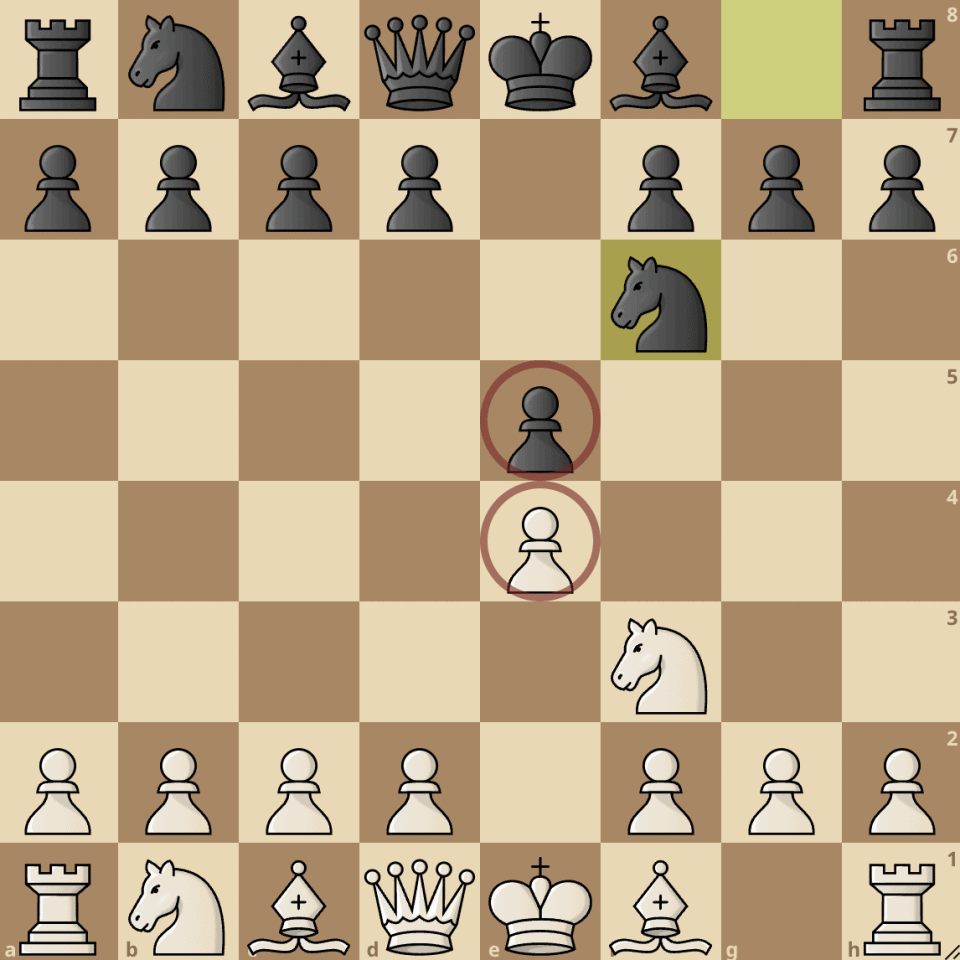



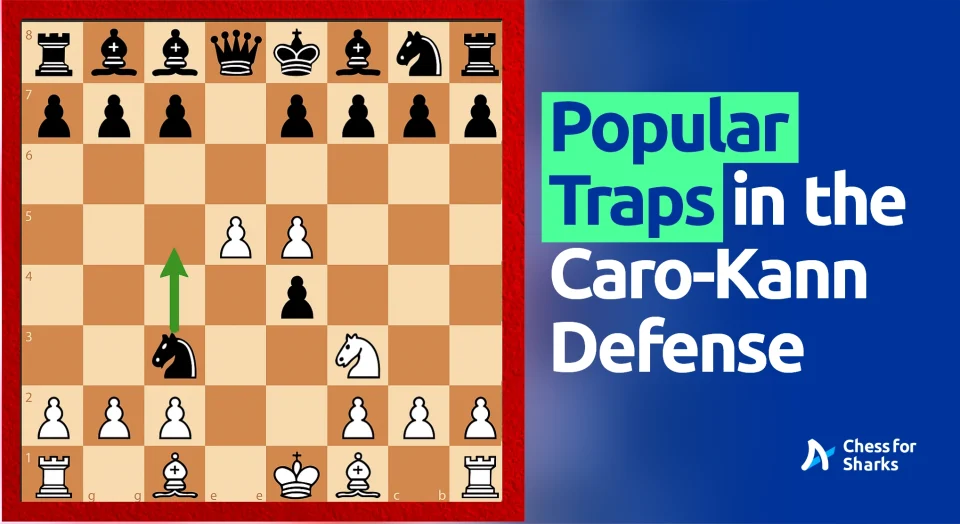

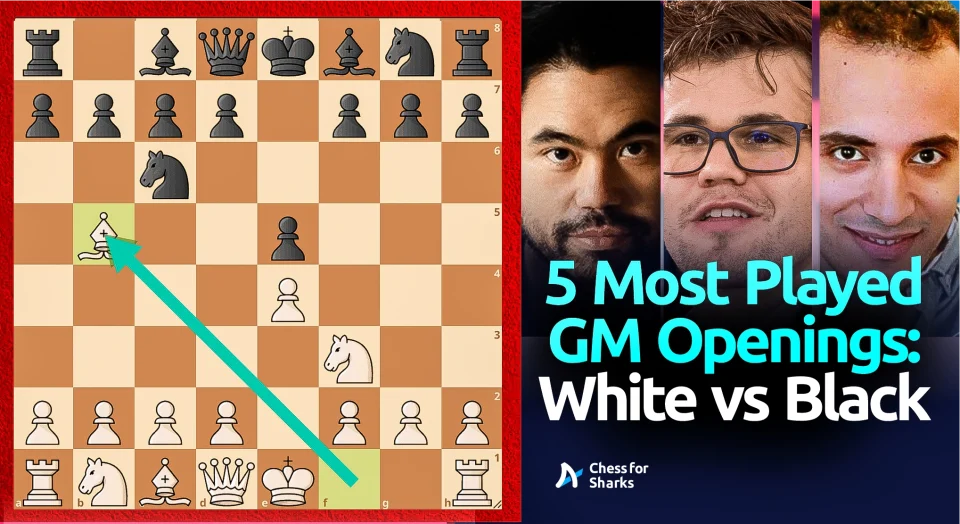
join the conversation